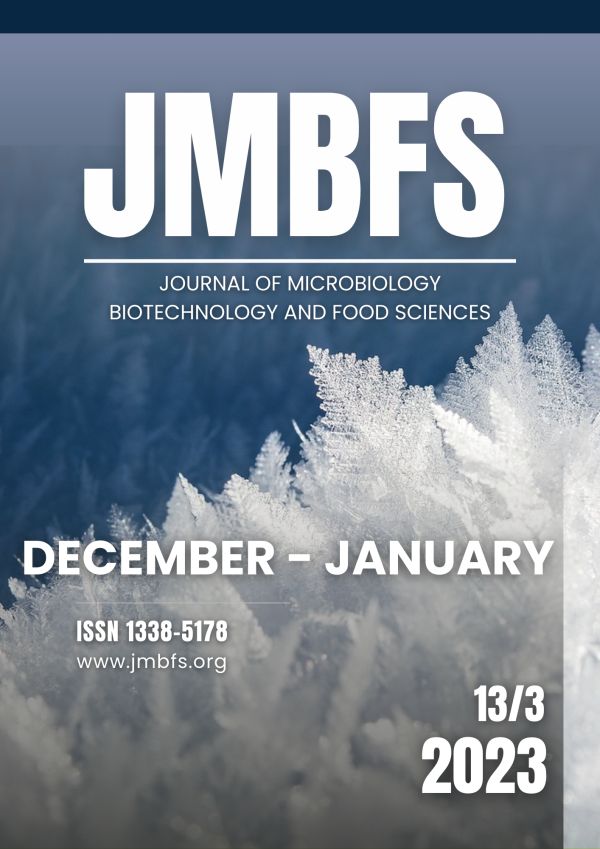COMPARISON OF CELL DEATH RATE IN VARIOUS CHICKEN LYMPHOCYTES POPULATIONS IN A RESPONSE TO THREE TEMPERATURE TREATMENTS
DOI:
https://doi.org/10.55251/jmbfs.10306Keywords:
broiler chicken, temperature, immunity, apoptosis, oxidative stressAbstract
The goal of the experiment was to evaluate susceptibility of lymphocytes populations derived from bursa of Fabricius, spleen, thymus, and blood to temperature treatments in vitro. Temperatures used in study was 37 °C (thermoneutral), 41 °C (mild heat stress) and 45 °C (severe heat stress). Cells were incubated for 8 hours and after 3 and 8 hours were measured numbers of apoptotic, necrotic and CellROX positive cells by flow cytometry. Representation of live lymphocyte phenotypes (CD3, CD4, CD8, BU1) in cell populations were also measured. At all temperature treatments, thymus lymphocytes population had the lowest (p < 0.05) percentage of apoptotic cells. On the other hand, significantly highest numbers (p < 0.05) of apoptotic cells were found in bursal lymphocytes after 8 hours of incubation. Differences in numbers of necrotic cells were more pronounced at 45 °C, where after 3 and 8 hours of incubation were significantly highest numbers (p < 0.05) of necrotic cells in spleen. Increasing temperature induce production of reactive oxygen species (ROS) in cells and highest proportion (p < 0.05) of ROS-positive cells were found in bursal and spleen cell population after 8 hours of incubation. Transmission electron microscopy showed loss of mitochondrial matrix and disrupted mitochondrial membrane in mitochondria of lymphocytes at 45 °C as initial damage caused by ROS. From individual cell phenotypes, there were significantly decreased (p < 0.05) B lymphocytes in bursa of Fabricius, CD4+ and CD8+ lymphocytes in thymus and whole T lymphocytes population in spleen at 45 °C. Various susceptibility to temperature can be predictive factor of worse function in some organs in stress conditions where body temperature increase.
Downloads
Downloads
Published
How to Cite
Issue
Section
License
Copyright (c) 2022 Vladimir Zmrhal, Andrea Svoradova, Lucia Olexikova, Peter Chrenek, Jaromir Vasicek, Petr Slama

This work is licensed under a Creative Commons Attribution 4.0 International License.
All papers published in the Journal of Microbiology, Biotechnology and Food Sciences are published under a CC-BY licence (CC-BY 4.0). Published materials can be shared (copy and redistribute the material in any medium or format) and adapted (remix, transform, and build upon the material for any purpose, even commercially) with specifying the author(s).





